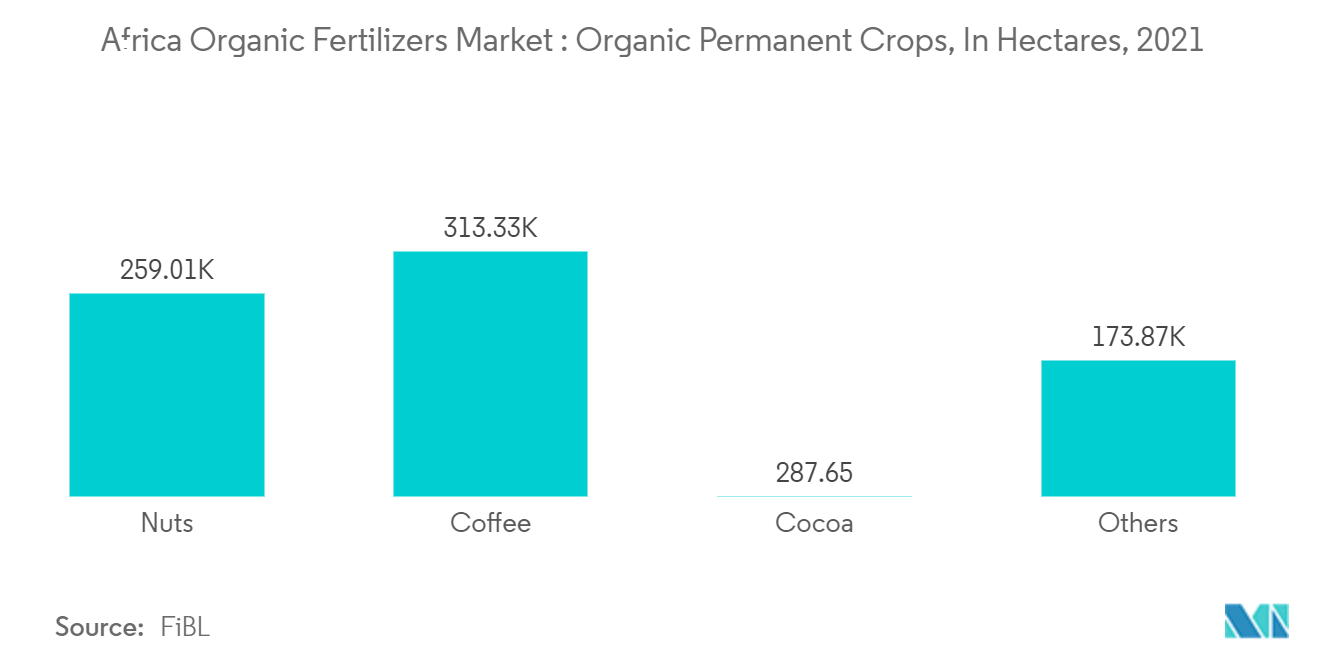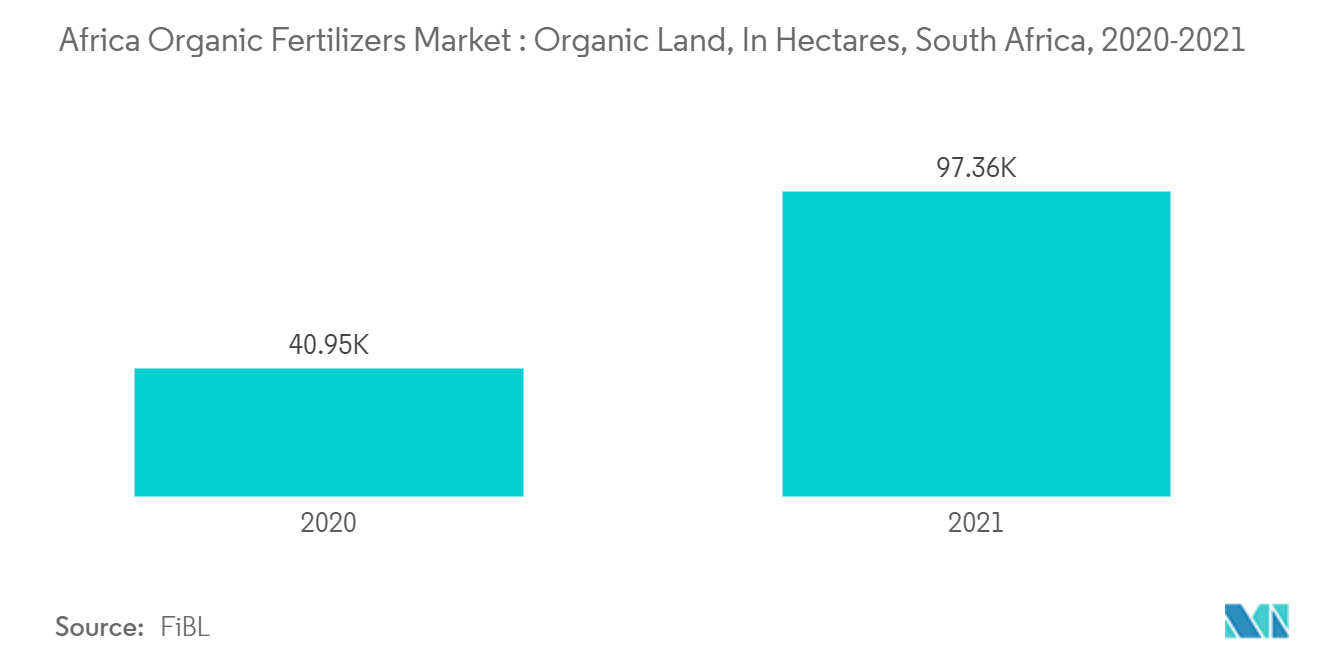Market Trends of Africa Biological Organic Fertilizers Industry
This section covers the major market trends shaping the Africa Biological Organic Fertilizers Market according to our research experts:
Popularity for the Organic Farming Drives the Market
- Africa has the highest population with the largest arable land. For instance, the Sub-Saharan African region has 13% of the world's population and approximately 20% of the global agricultural land. However, the region is facing severe food insecurity primarily due to inadequate food production. The lack of access to mechanization in farming and limited use of fertilizers due to less farmer buying power are driving the demand for alternative cost-effective fertilizers, such as organic fertilizers, in the region.
- Organic farming in Africa has been increasing at a significant rate. According to FiBL, the area under organic permanent crops are 374,118 thousand hectares in 2021. There are more than 3.8 million hectares of certified organic agricultural land in Africa, constituting about 2.8% of the world's organic agricultural land. The most important organic permanent crops grown in Africa are nuts (mainly cashew nuts), which were grown on an area of over 291,000 hectares, followed by olives, coffee, and cocoa, each with an area above 200,000 hectares in 2020.
- The countries with the largest permanent crop areas were Tunisia (mainly olives), which reported an area of nearly 269,000 hectares, followed by Sierra Leone, Ethiopia (mainly coffee), Congo (cocoa and coffee), and Kenya (mainly nuts), with the latter reaching an area of nearly 113,000 hectares. As organic cultivation only uses biological organic fertilizers, increasing organic farming will boost the African market.

South Africa Dominates the Market
- South Africa is the top country among all the African countries in terms of the revenue generated from the biofertilizer segment. Factors like environmental concerns, increasing awareness among the farmers, and degrading soil quality, are the major market drivers in the region.
- According to Food and Agriculture Organization (FAO), the consumption of fertilizers in South Africa increased from 70.4 Kg per hectare in 2018 to 72.8 Kg per hectare in 2020. Over the years, more chemical fertilizers consumption than recommended levels has led to soil acidification. Thus, more organic fertilizers are needed to correct the PH value of the soil. In addition, the country's organic land has been increasing.
- For instance, the organic land in 2020 was 40,954 thousand hectares and has increased to 97,359 thousand hectares by 2021. Updated Production needs to be increased on low fertile soil with a high amount of organic fertilizers. This enhances the nutrient availability of crop plants (by processes like fixing atmosphere N or dissolving P present in the soil), thus, imparting better health to crops and soil, thereby enhancing crop yields, which, in turn, may drive the organic fertilizer market during the forecast period.
- Regional and global players manufacturing biofertilizers in South Africa are also one of the major factors boosting the market in South Africa.

